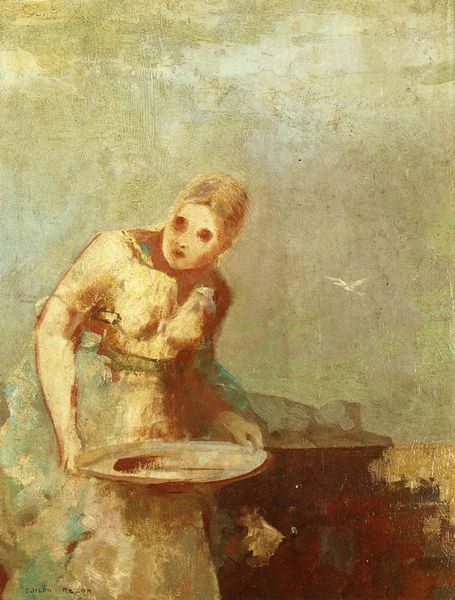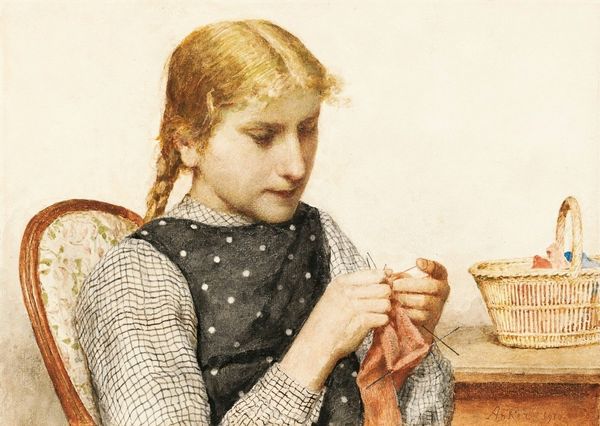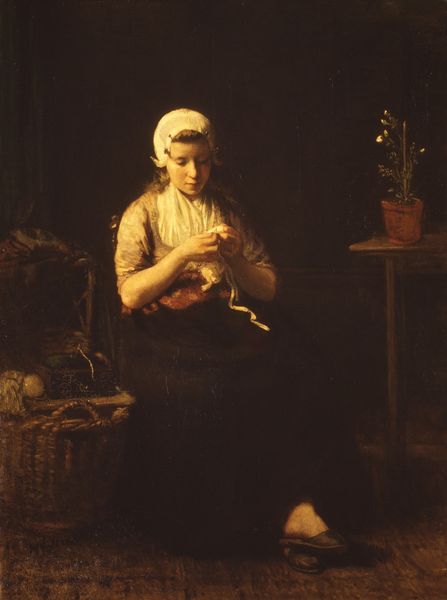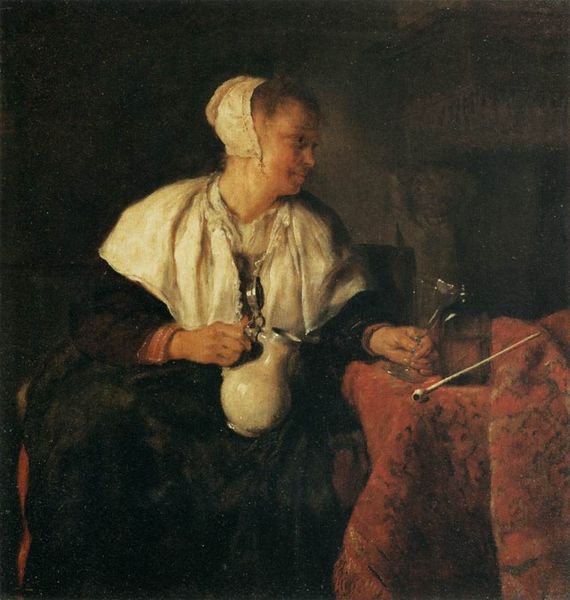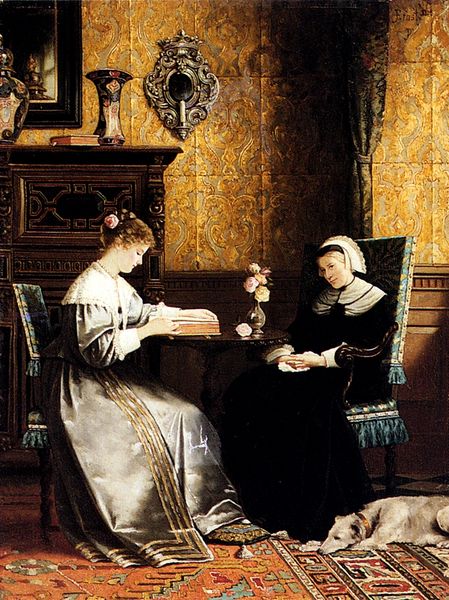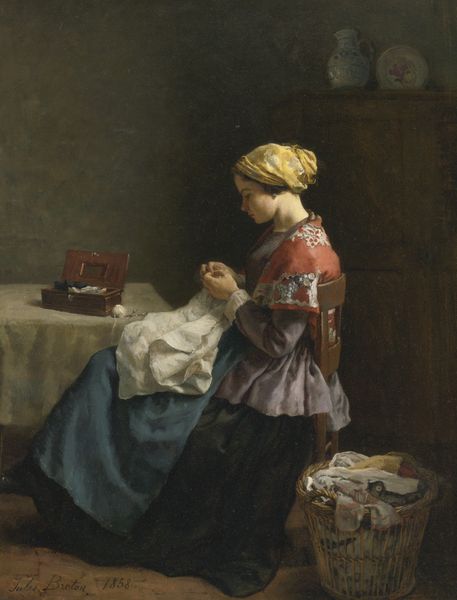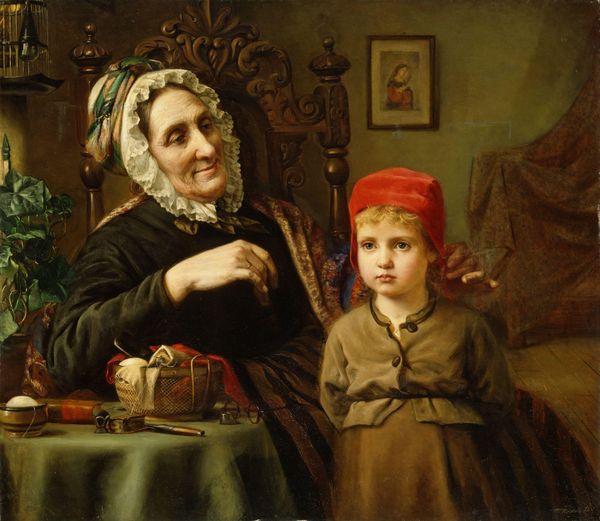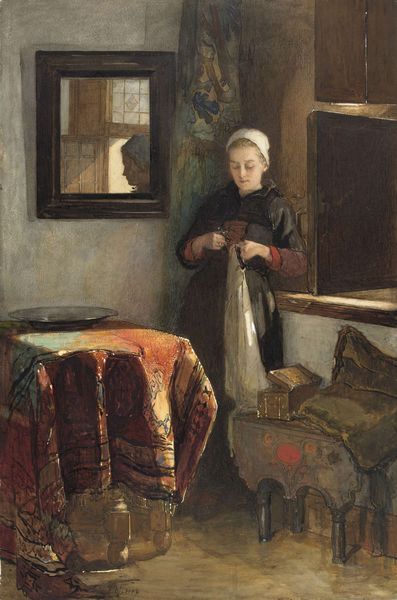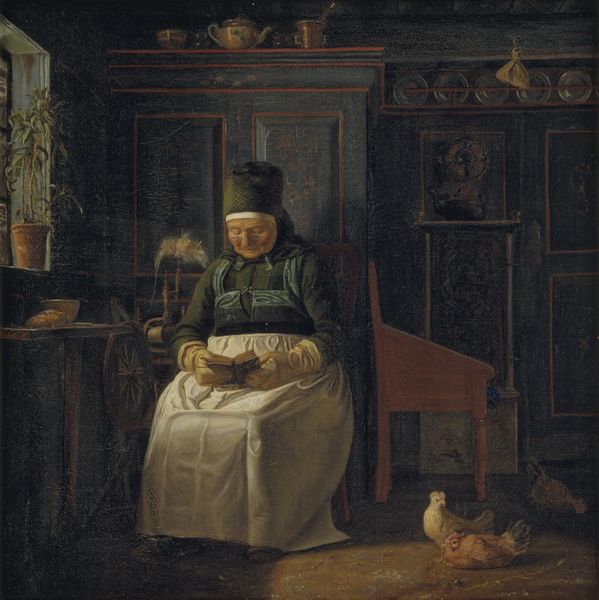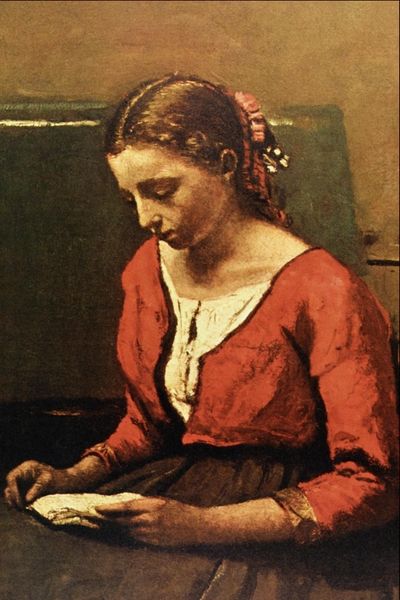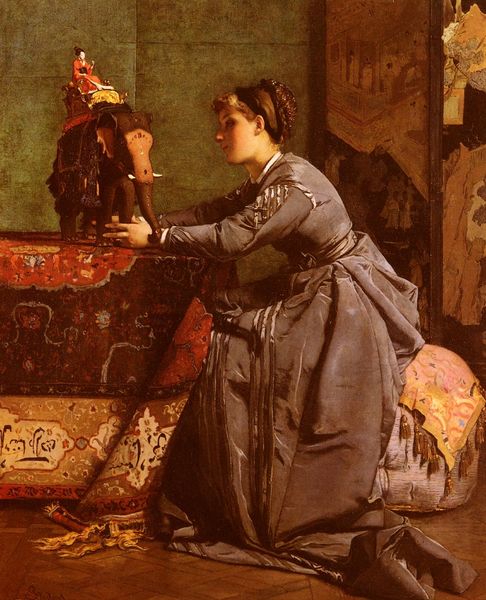
painting, oil-paint
#
portrait
#
gouache
#
baroque
#
painting
#
oil-paint
#
oil painting
#
genre-painting
#
rococo
Dimensions: 80 x 101 cm
Copyright: Public domain
Curator: Before us hangs Jean-Baptiste-Siméon Chardin’s “The Tea Drinker,” an oil painting created around 1735. It currently resides in the Hunterian Museum and Art Gallery in Glasgow. Editor: There’s such an intimate quality to it. It feels quiet, contemplative… almost like a candid snapshot, even though it’s obviously posed. Curator: Precisely. Consider the rise of tea culture in 18th-century Europe, particularly within the domestic sphere. Tea, initially a luxury item, gradually became more accessible, altering social rituals and power dynamics. This painting provides insight into the way domestic labor shapes social relations in what seems a moment of pause, with labor suggested rather than overtly displayed. Editor: And it’s meticulously crafted; the soft, diffused light, the textures of her clothing. It makes you think about where those materials came from, who spun the fabric, dyed it, and how each element contributed to this woman’s experience. This daily ritual involves vast amounts of labor for both tea cultivation and production of tableware. Curator: Chardin avoids idealizing his subject, showing her with a palpable realism, in an era preoccupied with Rococo flamboyance. She's presented not as an idealized aristocrat, but as a person, challenging pre-existing social hierarchy that pervaded popular art. Editor: Right, Chardin's use of oil paint—how he builds up these soft, almost powdery layers—it emphasizes the everyday quality of the scene, rather than the extravagant, theatrical quality you'd expect in Baroque portraits of the period. Also, there is an emphasis on consumption evident, showing tea production is intrinsically linked with its ultimate point of culmination. Curator: Considering feminist readings, the painting provides insight into gendered spaces. In this artwork we witness women engaged in practices situated in domestic space. Editor: It highlights that there's significance in these mundane acts, transforming the act of tea drinking into something dignified and culturally loaded. The way materials like the red table draw the eye gives value to items of domestic setting, too. Curator: Exploring that everyday life—the uncelebrated yet essential practices—makes you think of the multitudes absent from history, yet their influence ripples down, shaping cultural consciousness. Editor: I agree, considering how this image renders not only this moment but reveals broader networks that touch upon gender, materials, labor, and economics is deeply compelling.
Comments
No comments
Be the first to comment and join the conversation on the ultimate creative platform.
